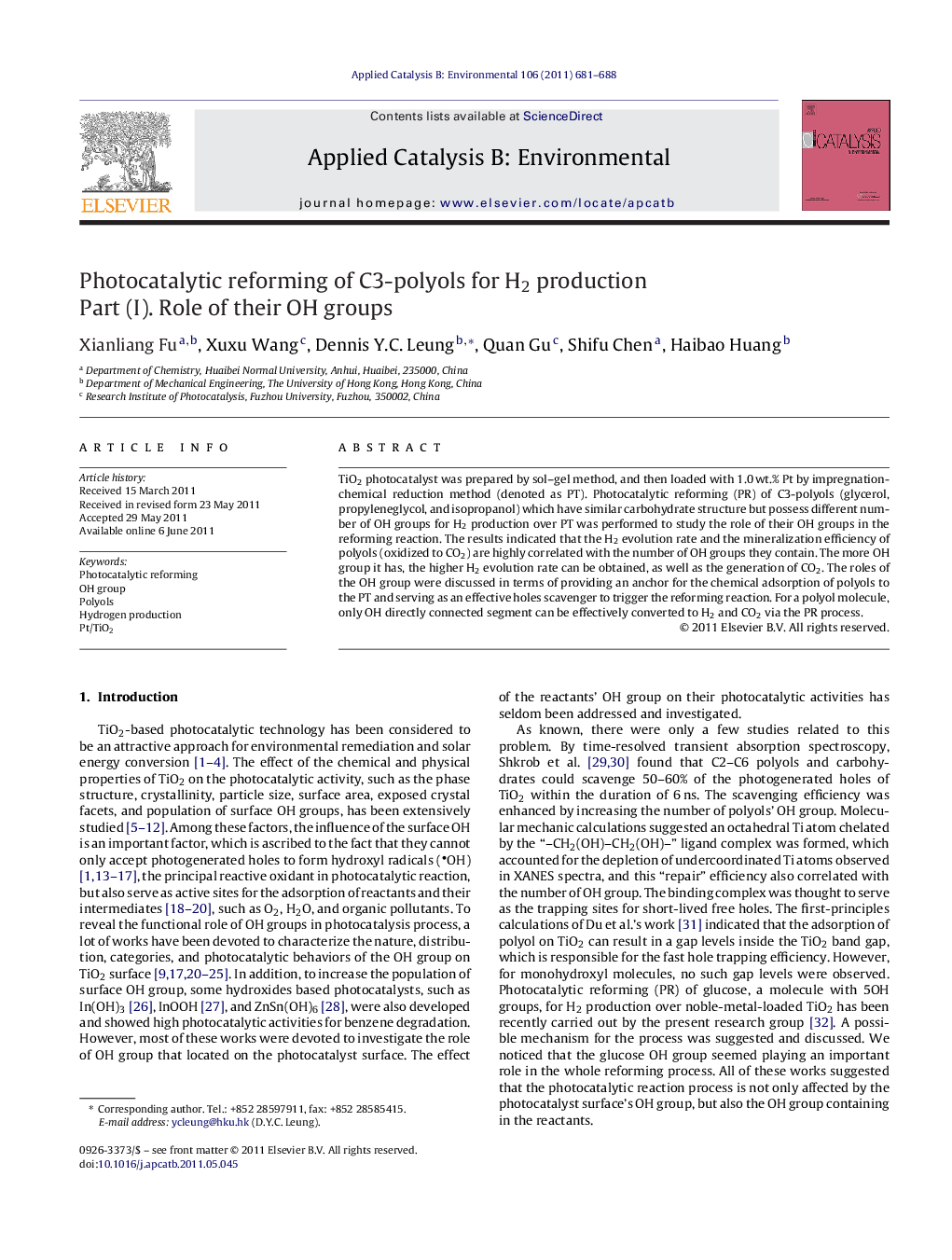| Article ID | Journal | Published Year | Pages | File Type |
|---|---|---|---|---|
| 46949 | Applied Catalysis B: Environmental | 2011 | 8 Pages |
TiO2 photocatalyst was prepared by sol–gel method, and then loaded with 1.0 wt.% Pt by impregnation-chemical reduction method (denoted as PT). Photocatalytic reforming (PR) of C3-polyols (glycerol, propyleneglycol, and isopropanol) which have similar carbohydrate structure but possess different number of OH groups for H2 production over PT was performed to study the role of their OH groups in the reforming reaction. The results indicated that the H2 evolution rate and the mineralization efficiency of polyols (oxidized to CO2) are highly correlated with the number of OH groups they contain. The more OH group it has, the higher H2 evolution rate can be obtained, as well as the generation of CO2. The roles of the OH group were discussed in terms of providing an anchor for the chemical adsorption of polyols to the PT and serving as an effective holes scavenger to trigger the reforming reaction. For a polyol molecule, only OH directly connected segment can be effectively converted to H2 and CO2 via the PR process.
Graphical abstractFigure optionsDownload full-size imageDownload as PowerPoint slideHighlights► The role of C3-polyols’ OH groups in their photocatalytic reforming (PR) reaction has been investigated. ► The OH groups served as anchors for the chemical adsorption of polyols, and as effective holes scavengers to trigger the reaction. ► OH directly connected segment of polyol can be effectively converted to H2 and CO2 via the PR process.
